Adding HTTP Security Headers Using Lambda@Edge.
 wilmo martinez
wilmo martinez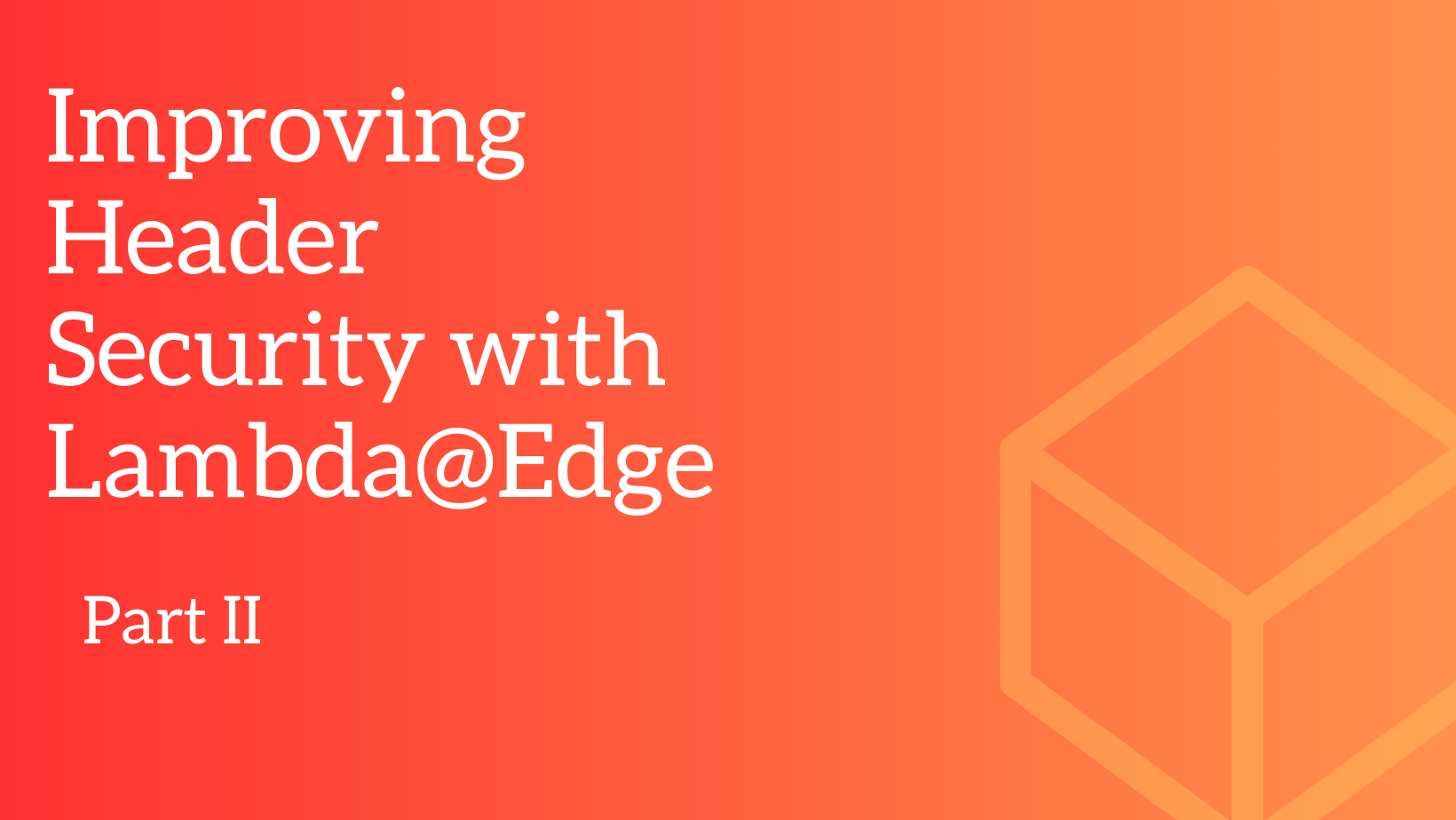
In the previous section, we've got the basics down on Lambda@Edge and web security headers. Now, let's roll up our sleeves and learn how to set up a Lambda function that'll give your web defenses a rock-solid boost. In Part II, we'll walk you through deploying a Lambda@Edge to shield your web apps from the latest threats and vulnerabilities.
Security inspection
The first step is to check the status of our website. We going to use https://observatory.mozilla.org/ to scan our domain.
for this demo, I will use my domain wilmomartinez.com but replace this domain name with your own.
The following is the result of the scanning.
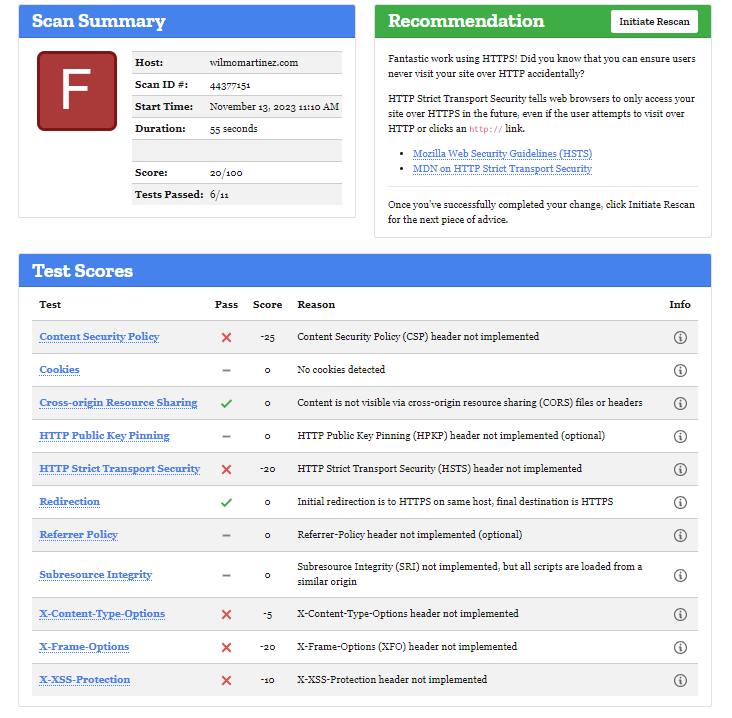
Create a Lambda Function
Lets create the lambda function that would add the security headers to the responses from the origin in our CloudFront distribution.
In the AWS Lambda console go to functions, click create function and select Author from scratch. In the create function session will specify the following:
| Field | Value |
| Name | lambda-edge-security-headers |
| Runtime | Node.js 18.x |
| Role | Chose an existing role |
| Existing role | existing role |
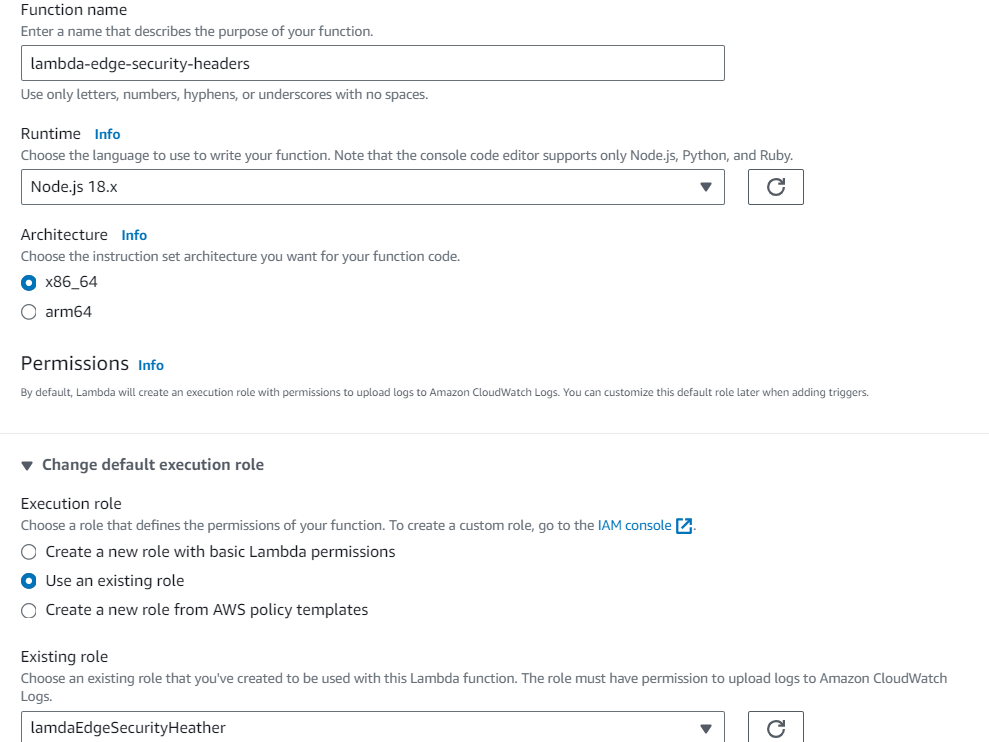
Then click the create function button.
Write function code
I used the following code for the lambda function. It basically sets Strict-Transport-Security, Content-Security-Policy, X-XSS-Protection, X-Content-Type-Options, X-Frame-Options, and Referrer-Policy headers, then returns the updated response that include the security headers.
'use strict';
export const handler = async (event, context, callback) => {
console.log('Event: ', JSON.stringify(event, null, 2));
const response = event.Records[0].cf.response;
response.headers['strict-transport-security'] = [{ value: 'max-age=31536000; includeSubDomains' }];
response.headers['content-security-policy'] = [{key: 'Content-Security-Policy', value: "default-src 'none'; img-src 'self'; script-src 'self'; style-src 'self'; object-src 'none'"}];
response.headers['x-xss-protection'] = [{ value: '1; mode=block' }];
response.headers['x-content-type-options'] = [{ value: 'nosniff' }];
response.headers['x-frame-options'] = [{ value: 'DENY' }];
response.headers['Referrer-Policy'] = [{ value: 'strict-origin' }];
return response;
};
See more about security headers:
https://developer.mozilla.org/en-US/docs/Web/HTTP/Headers/X-Frame-Options *
https://developer.mozilla.org/en-US/docs/Web/HTTP/Headers/Strict-Transport-Security
Test the function
It is highly recommended to test if our functions execute successfully and return the expected response before proceeding with the association with CloudFront. To do that we are going to take advantage of the test invoke function in the Lambda console.
Click the test, and you will be prompted with the window to configure your test event. In this case we will use the CloudFront Modify Response Header template. Select invoke
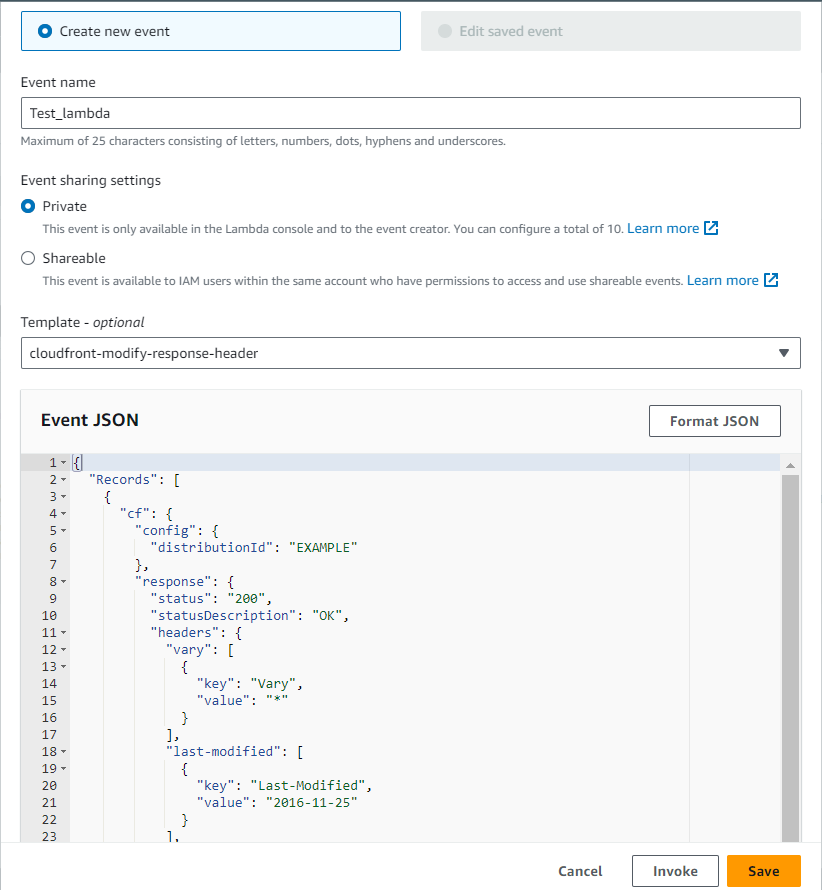
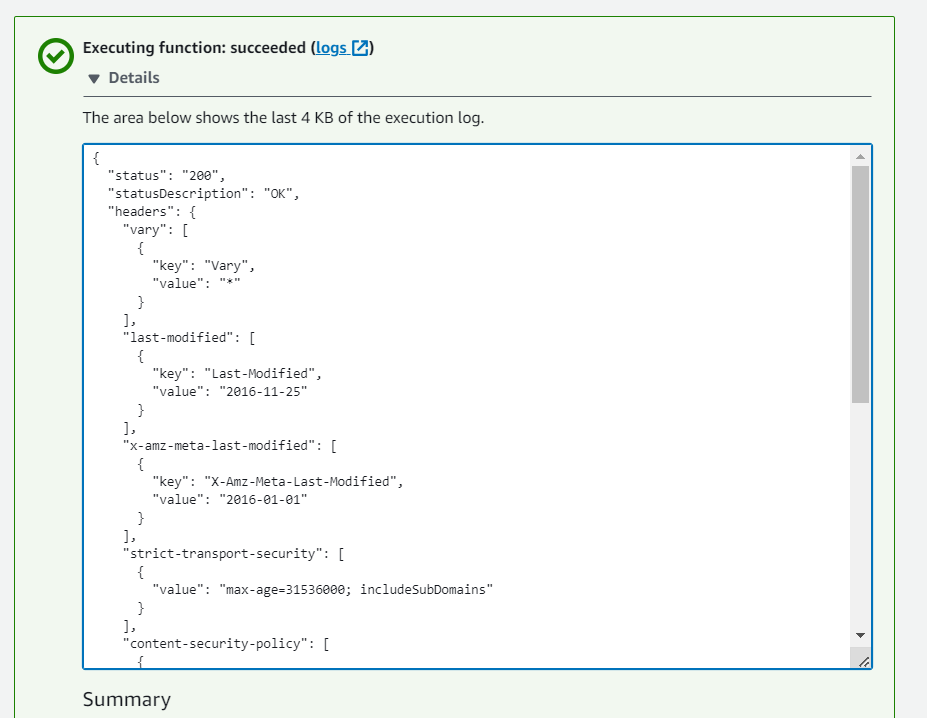
Deploy lambda
once we confirm that our lambda works as expected, now is time to deploy.
In order to deploying a function to Lambda@Edge we need to complete to process:
Create a function version
Associate the function version with the CloudFront distribution by selecting an applicable Cache Behavior and an event trigger type (viewer request, viewer response, origin request or origin response).
We can do both at once by selecting in Actions the option Deploy to Lambda@Edge
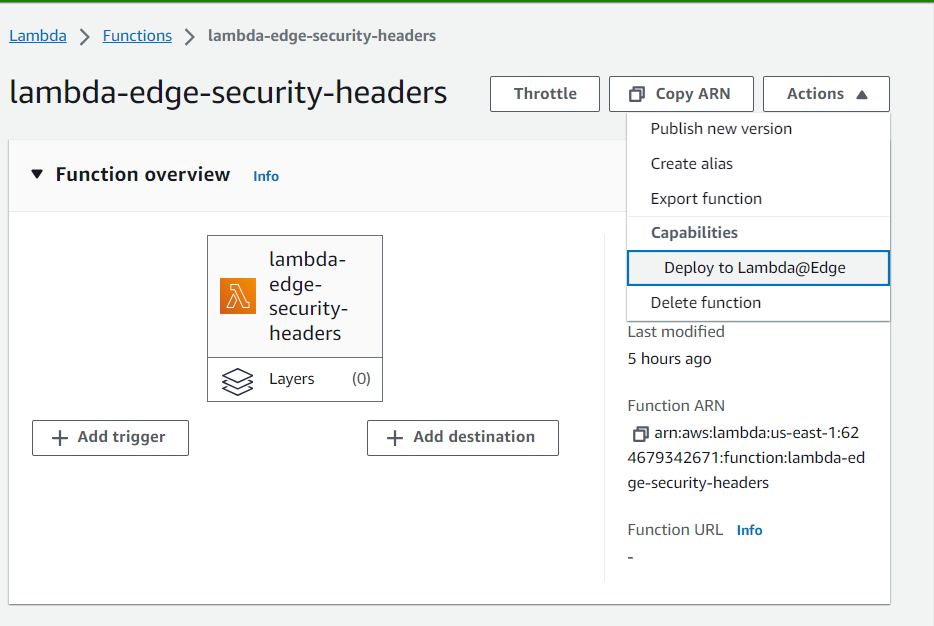
Set the trigger properties as shown below and click Deploy
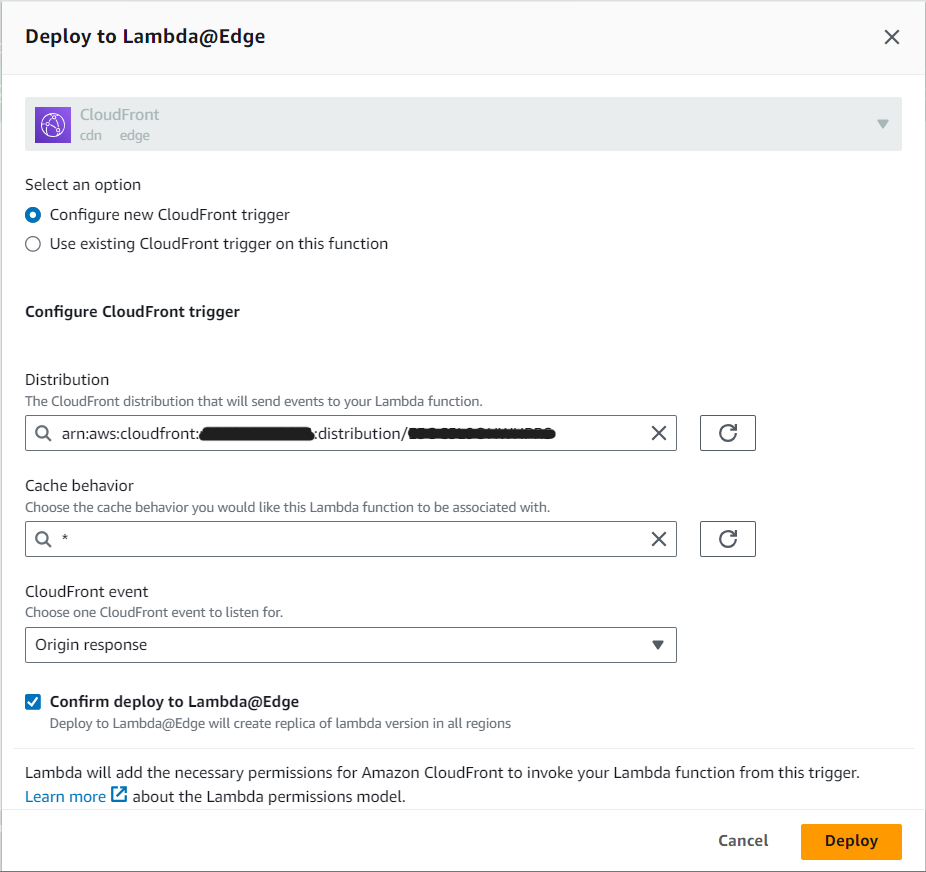
After that, we will see the message that both, lambda version and CloudFront trigger has bee successfully created.
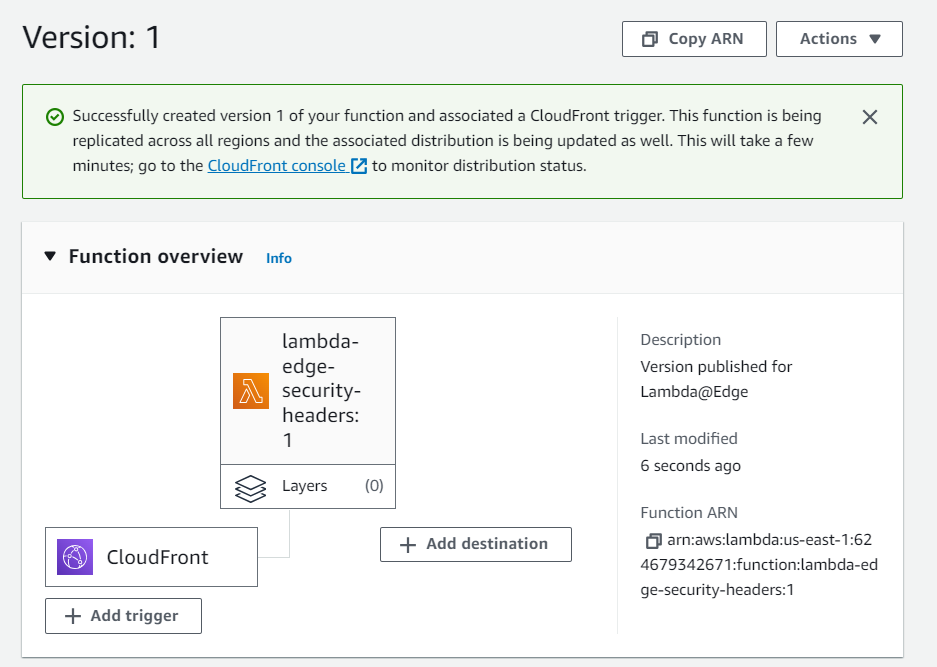
Validate the security headers
Lets check the header response form our Cloudflare distribution now.
curl --head https://<your cloudfront distribution or Domain name>
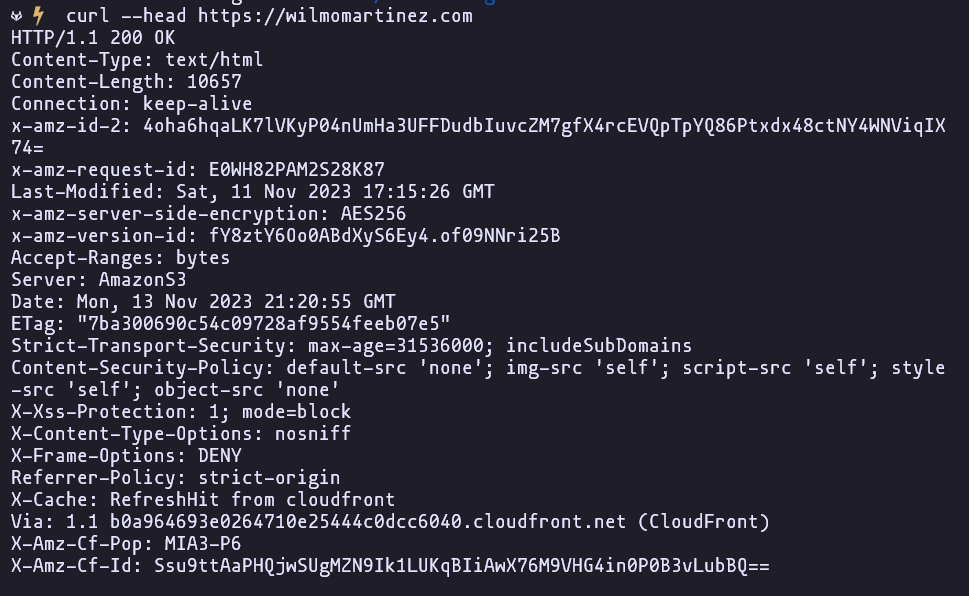
Rerun inspection
Lets rescan our domain.
https://observatory.mozilla.org/. Now we have a A+ score
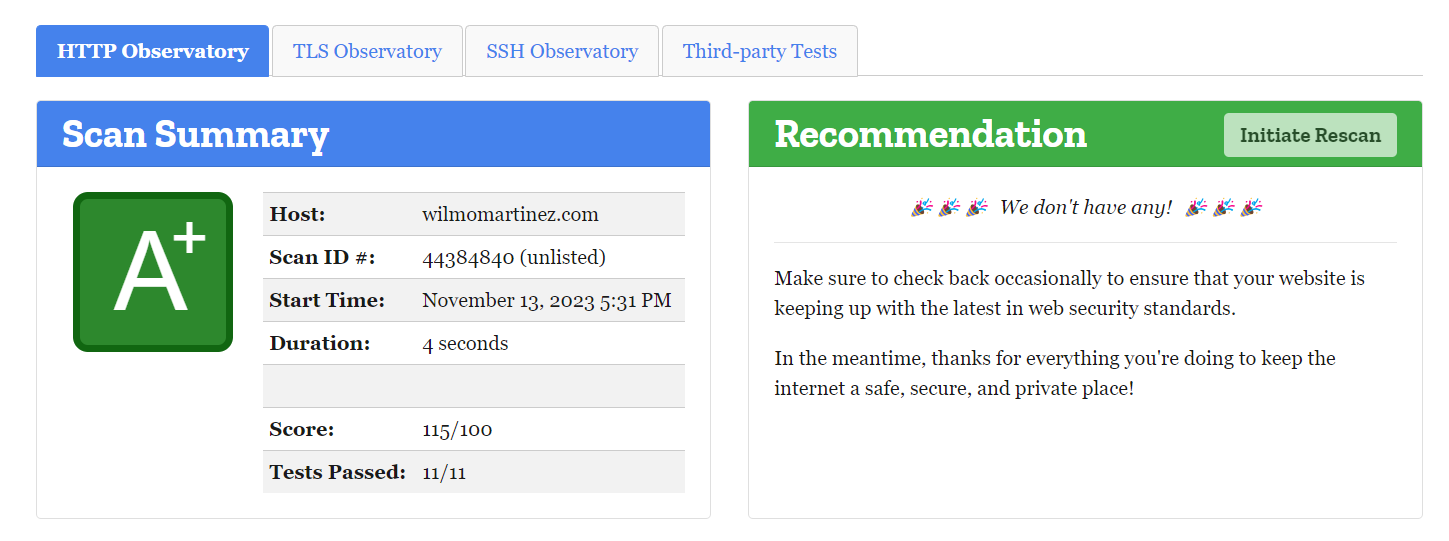
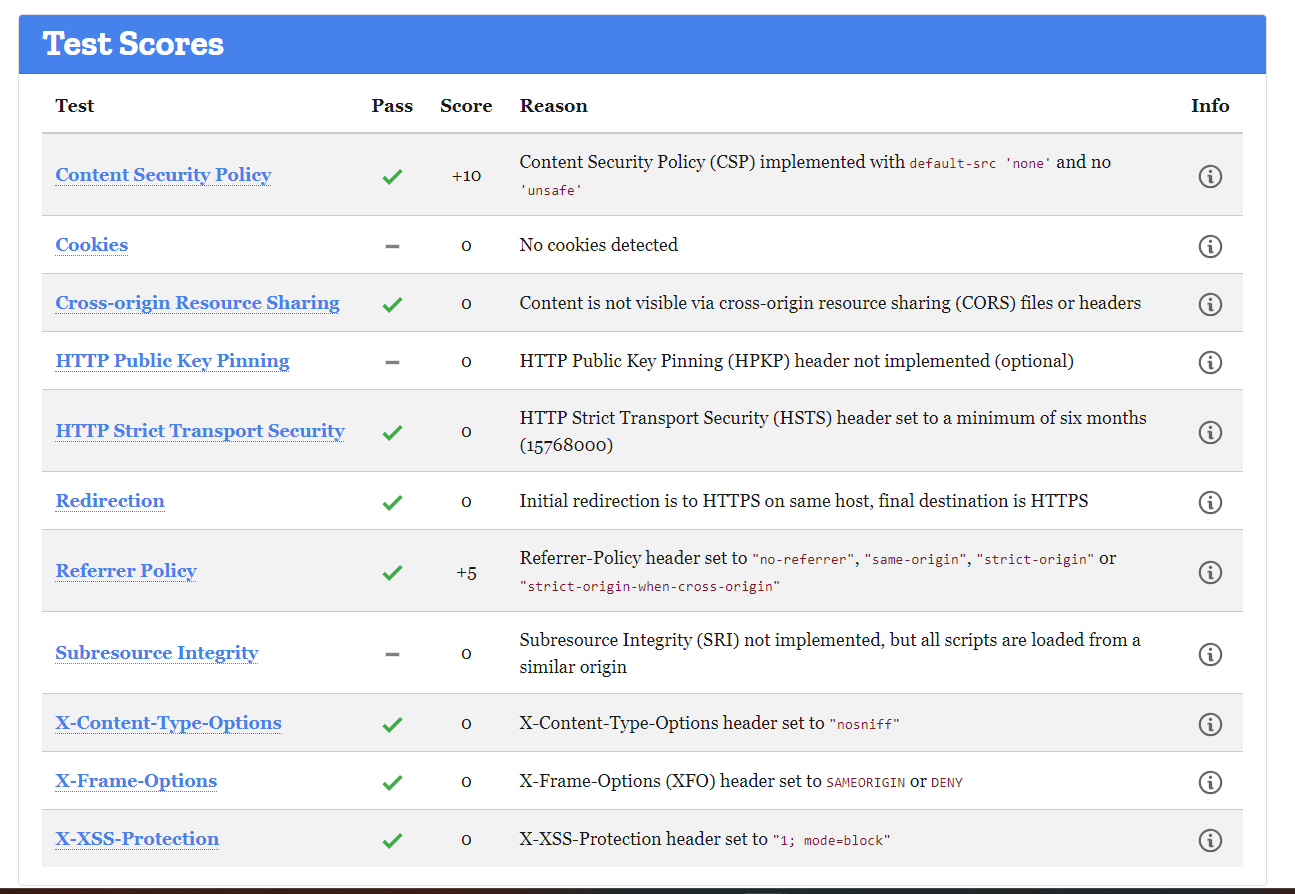
Conclusion
Enhancing security through Lambda@Edge involves strategically integrating security headers into the origin response trigger of a CloudFront distribution behavior. In this demonstration, We've gone through the process of creating a Lambda@Edge function, associating it with a CloudFront distribution trigger, and verifying the effectiveness while actively monitoring the results. While this demo shows what Lambda@Edge can do, there's a lot more it can offer for coming up with clever and flexible ways to boost and strengthen security.
Subscribe to my newsletter
Read articles from wilmo martinez directly inside your inbox. Subscribe to the newsletter, and don't miss out.
Written by

wilmo martinez
wilmo martinez
Hello! I'm a Cloud Engineer passionate about finding and solving challenges in the ever-evolving world of cloud tech, especially AWS. Constantly learning, I'm here to share my experiences and insights. Let's dive into this journey together!